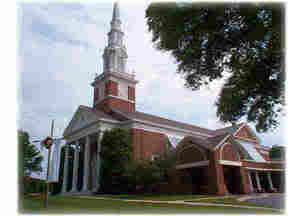grief as the unfinished agenda of God (john 19)
We are reflecting on the seven last words of Jesus from the cross. In a few weeks we will gather in the sanctuary, on a Friday evening, listening again to these words, spoken and sung, in the darkness of this space. We have listened to the first two of the words of Jesus: a public prayer, “Father, forgive them”, spoken by the Lord in the presence of his torturers; and “Today, you will be with me in paradise”, spoken to a thief who was crucified alongside him.
And now the third word. Jesus hangs from the cross and immediately we notice that he is not alone. “Must Jesus bear the cross alone?”, we asked last Sunday as we sang the hymn, and the answer has always been “no”. We do not bear our crosses alone.
Standing by the cross, John tells us, are Jesus’ mother, Mary; his mother’s sister, also named Mary, the wife of Clopas; and Mary Magdalene. Evidently Mary, or Miriam, was a common name. With them was the “disciple whom Jesus loved”, most likely John, despite what we learned by reading The DaVinci Code! Jesus, who is being crucified, sees them and speaks to each of them. To his mother he says, “There is your son”. And to the disciple he says, “There is your mother”.
Jesus speaks first to his mother, Mary. Mary has divided Protestants from our Catholic and Orthodox brothers and sisters. On the one extreme is Marian devotion and veneration, which has been on the increase in recent years; on the other extreme is the ignorance and avoidance of Mary.
This passage of scripture does not allow us to avoid Mary; she is there, at the foot of the cross, along with the other women. But if we read more deeply into the gospel itself, we know that Mary has always been there, that women have always been there, just as they surround Jesus at the cross. At the beginning of the gospel there was Elizabeth’s anticipation of the birth of John the Baptist, there was the Magnificat, spoken by Mary and modeled on the prayer of Hannah, the mother of Samuel, which is much deeper in the biblical tradition.
Women are among the first to praise God, they are among the first to respond to the call to discipleship (“let it be to me according to your word”). Mary and Joseph take their baby to be circumcised, and Simeon says, to Mary, “this child is set for the rising and falling of many”, and more personally to her, “a sword will pierce through your own soul also”. And now, at the conclusion of the earthly life of Jesus, this prophecy is realized. Mary and the women are with Jesus in his suffering. They will also be there to discover the empty tomb, they will be in praying in the Upper Room, they will be present in the earliest house churches in the Book of Acts.
Even if the writing of the scriptures was a reflection of a male-dominated culture, and the interpretation of the scriptures across the centuries has been shaped by the men who have been teachers and leaders, there has always been an undeniable presence of women throughout the gospel, from the anticipation of his birth to the agony of his suffering to the desolation of his death to the surprise of his resurrection to the miracle of his appearances.
Women are always there, pestering judges until they act on behalf of justice, interceding for a child who is sick, washing the feet of Jesus with costly perfume, taking the risk of touching his garment, hosting a meal among a small group of friends, caring for the details and listening to the teaching, offering a small gift that represented everything, and on a very bleak day, they showed up to mourn. We sometimes miss the women who fill the biblical narratives, paying more attention to the apostles or the prophets, but when it counts, at a critical, decisive time….at a crucifixion, who is there? The women.
There is your mother, there is your son. In another sense Jesus is saying something more: Take care of each other. We see the cross of Jesus, we see his suffering, but we also do not take our eyes off of each other. In our culture suffering and death isolate us. Years ago a family joined our church in Greensboro. He was a retired insurance executive, and they seemed to be a happy couple. Some time later he went into the hospital, and I visited him about every other day. I learned that they were from the Chicago area, had retired first to Florida, found it to be too hot and too crowded, and then had moved to the piedmont region of North Carolina to be near their adult daughter.
His hospitalization was an extended one. After many weeks his health deteriorated, then, unexpectedly, he died. I was asked to plan and preside at his memorial service. I met with his wife and daughter, and the service was set for one of the local funeral homes. This was unusual for our church; most services were held in the sanctuary, but this was the request of the family and it was fine.
The service was scheduled for a weekday morning, at 11:00 a.m. I was in the office, thinking I would leave at about 10. Someone came by to talk, it took a few minutes, it was more like 10:20 when I left. I arrived at the funeral home at about 10:40, and a member of the staff took me into a side room. “You can enter the chapel through this door”, he said. “You will know it is time to begin when the organist stops playing.”
I walked into the chapel slightly before 11, and sat down. The family had not really known many people in our church or community, or so I thought. I sat down, looked at my notes… then I looked out at the long, narrow chapel, and it was absolutely packed. As I scanned the room I did not notice a single familiar face. Even more disturbing, I did not see any member of the family. At this moment the organist stopped playing. With my Bible and prayer book in hand, I stood up to begin the service.
Now I am a very cautious person by nature, and a lot was flashing through my mind in a split second. Was I in the right memorial service? Had I come to the wrong branch of this funeral home? I paused for a moment. I was ready to begin the liturgy, and then I stopped: I might be in the wrong place, and I might be about to start talking about the wrong person! It was a screenplay for a very bad movie, and I was about to be the main character!
So I motioned for the staff person, and we stepped outside. “Is this the service for…and I gave the name?” He assured me that it was—my heart rate began to slow down a little! “Then where is the family?” Or, he said, they are in the side room, which was just to the left. They were separated by shutters in what funeral homes call a “family room”. From an angle, they could see me, and I could see them, but they could not see those who had come to attend the service, and those present could not see them. It had a separate entrance, so the family never had to converse or interact with those who were present that day. I went back in, and we resumed the service. The mother and daughter have actually been lifelong friends, I later officiated at the daughter’s wedding, then baptized their children, all of which is another story.
Still, something about that morning has stayed with me. The architecture of that chapel seemed, upon reflection, to be unfortunate. Suffering, grief and death separate us and yet in these seasons of life we are most in need of connection, community and compassion.
In a crisis, our tendency is to withdraw, and suffering isolates us. In the crucifixion, Jesus is with the women, who are drawn in a public way into his passion. The cross is not a private religious experience, and it is a gift that John remembered not only what Jesus had said, but also those who were present in the last moments of Jesus’ life.
Is grief public or private, visible or hidden? The question is still with us. I think of the Plaza de Mayo in Buenos Aires, where the mothers of disappeared children, victims of a brutal military regime, gather on Thursdays to mourn, to protest, to inquire. This has been a part of the controversy of publicly acknowledging the bodies of fallen military returning to our country from war. Should the flag-draped caskets be photographed, or viewed, or should them remain hidden? We are inclined to be alone, but there is a part of us that needs to be in community.
Is grief public or private, visible or hidden? The inclusion of this aspect of the suffering of Jesus on the cross answers this question for us. This has always been one of the most fundamental instincts of the church of Jesus. When there is a tragedy, a crisis, a death, the church gathers. We gather to sit and wait. We gather to sing and pray. We gather to ask questions that have no answers, and tell stories that sometimes, for reasons we cannot explain, make us laugh. We gather with gifts of flowers and food. And in some way it all began at the cross. This was no solitary experience. It was precisely the time when Jesus most needed a community, and it is precisely the time when we most need a community.
There is your mother, Jesus says, there is your son. We sometimes look at the cross and we see our sin, and we imagine that the barrier that separates us from God and each other is essentially moral. The cross bridges human unrighteousness with the righteousness of God. But if we look at the cross and see only sin, repentance, forgiveness and salvation, we are missing something. The cross represents something else, and that is suffering and death. The cross is the sword that pierces through the human soul.
Jesus leaves behind a legacy of words, and one of the most striking is ours for today: here is your mother, here is your son; take care of your mother, take care of your son. The last words of Jesus are relatively few in number, and this is a model for us. It is not so important that we talk, or say “the right thing”, or explain what is happening. In some ways there was no explanation for what was happening on the cross: “Why have you forsaken me?”, Jesus asked, and next Sunday we will reflect on that word.
The community of disciples left behind by Jesus is given the amazing mission of being his body; the apostle Paul understood this when he wrote that when one member of the body suffers, all suffer. There would be grief, he realized, in his death, which he must have known was imminent. Jesus had promised that he would not leave us comfortless, that he would come to us, in the form of the Holy Spirit, the gift of presence, a sign that God is with us, we are not alone, we are connected as members of the one body, a body that takes the form of a cross.
Living bodies are not static, they change over time, life is not static, families are not static, churches are not static. Maybe Lent is a reminder that we learn, throughout our lives to give up something, and sometimes the most difficult sacrifice is to give up someone we love. When human beings die they leave a legacy, the words that are remembered, but also the people who remain, and in this way Jesus was human. He saw the people who were near to him, and his suffering was bound together with his own grief, and so he leaves a simple legacy: Do you see your mother, your father, your brother, your sister? Take care of each other.
Sources: Scot McNight, The Real Mary. Tom Knight, John For Everyone. Fleming Rutledge, The Seven Last Words From The Cross.




 Carter's Roost
Carter's Roost




0 Comments:
Post a Comment
<< Home